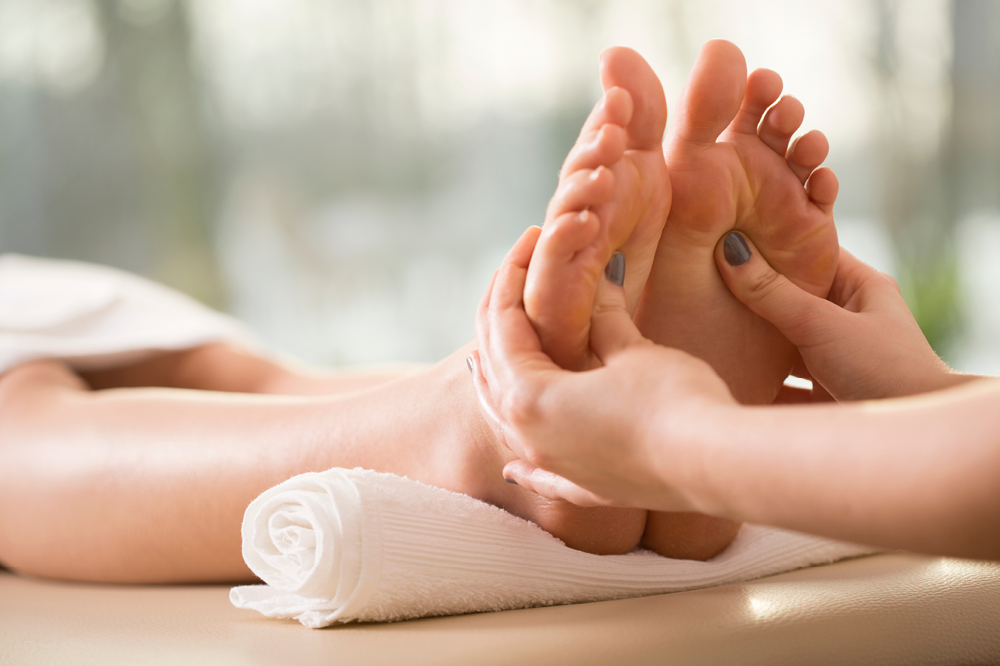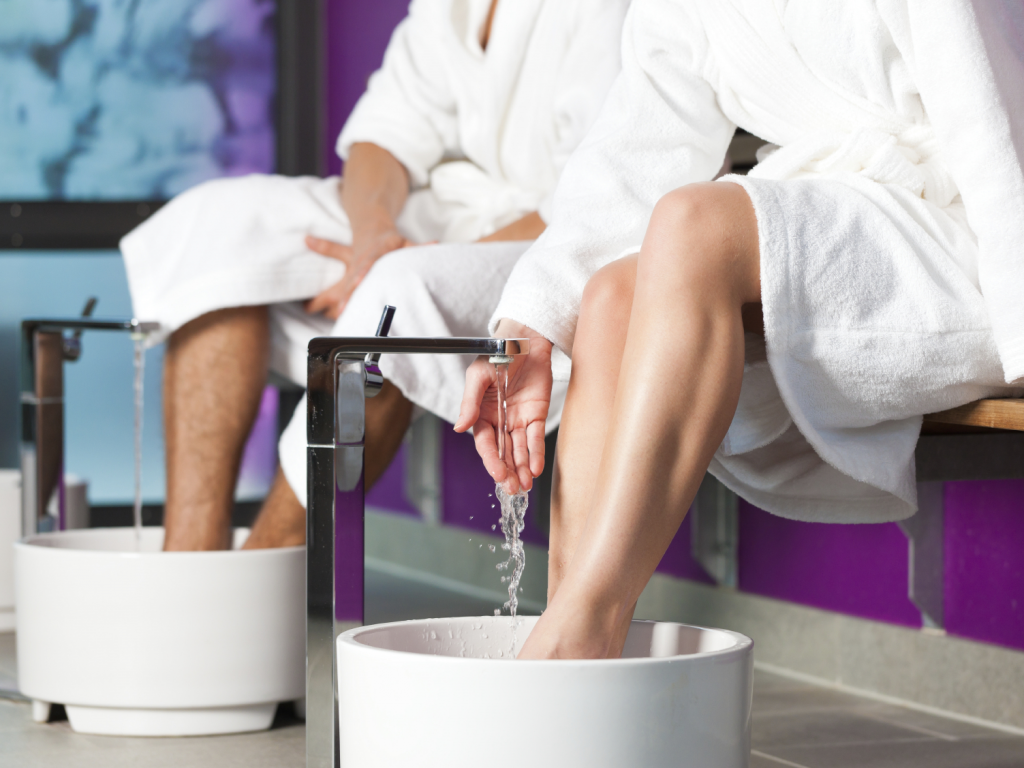We don't often consider water to be a wonder drug, but we instinctively turn to H20 as a healing device more often than you might think. Examples include running a burnt finger under cold water, taking a warm bath to ease sore muscles and using an ice pack to comfort a swollen or sprained ankle. Almost everyone has tried one of the above methods to make their body feel better in some way or another, and most are unaware that they’re practicing a basic form of hydrotherapy, which is the use of water to relieve bodily discomfort and promote healing and wellbeing.
Though many modern spas tout full body and foot hydrotherapy pools and sessions as the latest in alternative healing, the practice has actually been carried out for many years. Father Sebastian Kneipp, a 19th century Bavarian monk, is said to have been the first person to declare that diseases can be cured by using hot and cold water, but even Hippocrates used hydrotherapy in public baths as a healing technique in the fourth century B.C.
Today, hydrotherapy includes treatments like contrast foot baths, saunas, thermal baths, ionic baths, hydrotherapy pools, steam rooms, sitz baths and cold and hot compresses — all of which may or may not include extras such as Epsom salt and aromatherapy oils.

How Hydrotherapy Contrast Foot Baths Work
One form of hydrotherapy that is especially beneficial for the feet is a contrast foot bath. Contrast foot baths involve submerging the feet in both hot and cold water. Alternating between hot and cold water temperature is considered a miracle treatment for many people because it has a comforting effect for the entire body and helps relieve symptoms of ailments like chronic cold feet, menopause, circulation issues, insomnia and more.
Exposure to warmth causes the vein walls to expand and circulation to increase, which calms and soothes the entire body. Meanwhile, exposure to cold stimulates and invigorates the body as the veins contract and blood circulation slows. The rollercoaster of temperature one experiences during a contrast foot bath not only promotes blood circulation, which assists in bodily healing, but also keeps the arteries and veins fit and elastic due to the sudden opening and narrowing they endure.
What Hydrotherapy Heals
Hydrotherapy has the ability to relieve many diseases and disorders. Some benefits of hydrotherapy include:
1. Relieves Muscle Tension and Pain: Sore and injured muscles benefit from hydrotherapy because the increased blood circulation naturally alleviates pain and rehabilitates damaged tissues and tendons. Hydrotherapy also stimulates the release of endorphins, which further act as a natural pain reliever against muscle soreness.
2. Boosts The Body’s Immune System: Hydrotherapy significantly increases blood circulation, which helps move healing white blood cells throughout the entire body. This allows a free flow of a bodily fluid called lymph, which collects and removes unwanted materials like bacteria and toxins from the body. This is useful in the fight against illnesses like the common cold, flu, congestion, sinusitis and congestive headaches.
3. Aids Detoxification: The sweating and increased blood flow that hydrotherapy techniques induce can help cleanse the body and assist in detox. Impurities are flushed out via the sweat ducts and through the opened blood vessels, which help remove waste from the body. Some people even compare the level of detoxification the body experiences through hydrotherapy with a colon cleanse (one of the most practiced forms of bodily detox).
4. Relieves Stress: As mentioned above, hydrotherapy stimulates the release of endorphins, which not only relieve pain, but also act as a natural stress fighter in the body. In addition to decreasing anxiety, hot and cold contradiction helps reduce blood pressure, which further aids in stress relief.

5. Boosts Blood Circulation And Healing Chronic Cold Feet: One of the most obvious and helpful benefits of hydrotherapy is boosting blood circulation. As described above, the hot and cold rollercoaster causes the arteries and veins to expand and constrict, which aids in blood flow. This not only helps in overall bodily healing, it can decrease the severity of chronic cold feet.
6. Aids In Better Sleep: One cause of insomnia is having too much blood in the brain, which can create difficulty falling asleep. Hydrotherapy not only increases body temperature, which aids in sleeping, but it also helps circulate the blood away from the brain to other parts of the body. Meanwhile, hydrotherapy also stimulates soothing endorphins that decrease stress and lead to an overall sense of calmness and wellbeing.
RELATED: This Simple Foot Trick Can Help You Sleep Better
7. Relieves Symptoms of Arthritis, Osteoporosis and Fibromyalgia: The low-impact nature of hydrotherapy lends itself as a great healing tool for symptoms of arthritis, osteoporosis and fibromyalgia. Hot and cold therapy relieves pain, strengthens muscles, loosens stiff joints, increases range of motion and can help improve balance and coordination.
How To Make A Hydrotherapy Contrast Foot Bath At Home
Many health spas across the country offer various hydrotherapy techniques, including saunas, steam rooms, sitz baths, cold and hot washcloth application, and full size hydrotherapy pools. However, it’s fairly simple to experience the healing benefits of hydrotherapy at home by creating a contrast foot bath.
Preparation
You will need two foot basins that allow you to submerge your feet and legs to the mid-shin or calf point. Fill one with cool water (8 to 12 degrees Celsius) and one with warm water (34 to 38 degrees Celsius), making sure the warm water isn’t so hot that it burns.
Execution
Start by submerging both legs into the warm water and allowing them to soak for a duration of about three to five minutes. Follow by submerging both legs in the cold water basin for about 15 to 30 seconds. Repeat the process several times, from hot to cold, being sure to end your hydrotherapy session in the cold water basin. Follow up by thoroughly drying your legs and feet, applying lotion to both feet and covering up with warm socks.
Who Should Refrain From Hydrotherapy
While hydrotherapy is an inexpensive and natural way to treat disorders and bodily pain, it is not recommended for everyone. Patients who suffer from diabetes, Raynaud’s disease, multiple sclerosis, Buerger’s disease, cardiovascular disease or low blood pressure and patients who are elderly or pregnant should consult with a physician before trying hydrotherapy techniques, including a hydrotherapy contrast foot bath.


